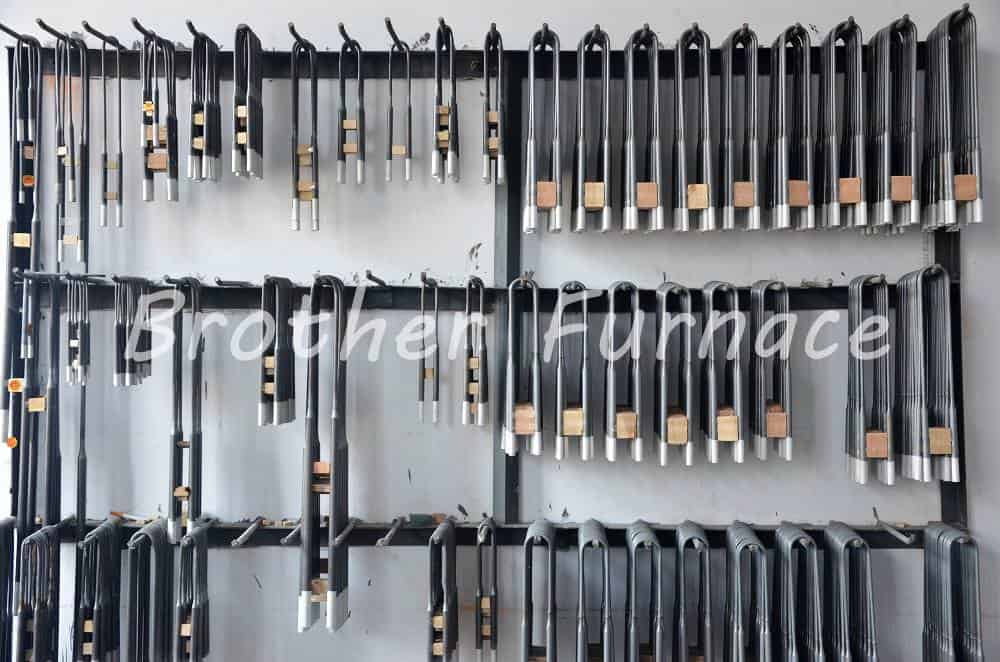MoSi2 heating elements are different from SiC heating elements. You can replace them separately. Knowing how to extend MoSi2 heating elements life will lower your costs.

Learn more about Mosi2 Heating Elements
MoSi2 heating element life-cycles depend heavily on the environment in which the heat treating is done. Switching between reducing environments and oxidizing environments can lower the lifetime of the heating element. Because the reducing environment removes the protective silica layer that forms on the surface. This layer protects the heating element from internal oxidation. Before use, MoSi2 heating elements are intentionally oxidized to produce the silica layer.
For Brother Furnace’s 1700 type MoSi2 heating elements, you can run at 1600C for hundreds to several thousands of hours in the air with somewhat standard mosi2 elements. But At 1700C, you might typically last only a few hundred hours in a well-insulated lab size furnace. So if your working temperature is 1700C, please choose our 1800 type MoSi2 heating elements.
MoSi2 elements typically fail by gradual thinning due to oxidation losses. When they drop to a certain thickness, the power density capability is exceeded and they heat up hotter in the thin area than a thick area and burn out. The thinning is also exacerbated by grain growth of the MoSi2, as the grains grow due to the high temps you can sometimes see an orange peel look on the surface.
We typically add small amounts of other elements to MoSi2 to help prevent grain growth. Some elements are better than others in this respect and we have different grades for different conditions. Note: MoSi2 elements also do not prefer to be turned on and off frequently, using them at lower temperatures (400-700C) can actually speed up oxidation thinning.
How to extend MoSi2 heating elements life
- MoSi2 heating element is only suitable for use in air or inert gas environments. Other active gas, such as H2, Cl2, and SO2, will damage the heating element.
- Please don’t use the furnace at 400 – 700℃ temperature range for a long time because the MoSi2 heating element will be easy to be oxidized in the temperature range.
- MoSi2 heating element is very brittle. Please pay great attention during moving and handling. Also, please avoid rapid heating and cooling to avoid the heating element broken. Max. 10℃/min heating or cooling rate is suggested.
- Please check the heating element every 3 months to see if they are in good connecting condition. If the connection gets loose, please open the over and tighten it properly.
Any questions, talk to an expert!
Learn More details about our heating elements:
Follow us on Facebook